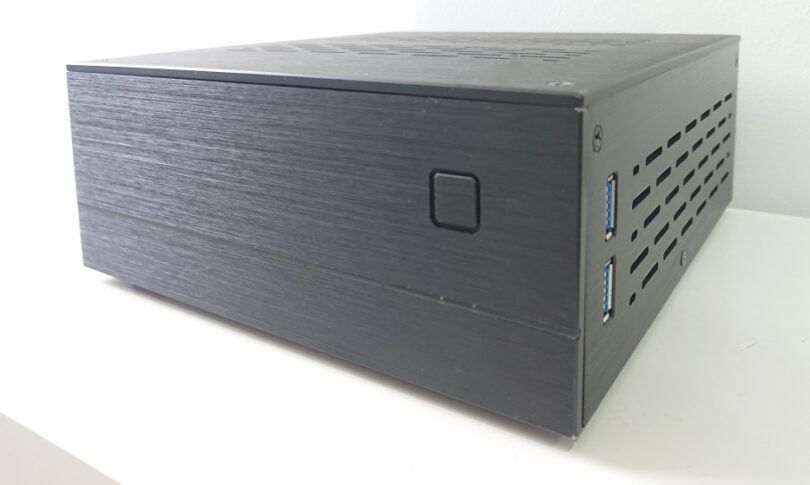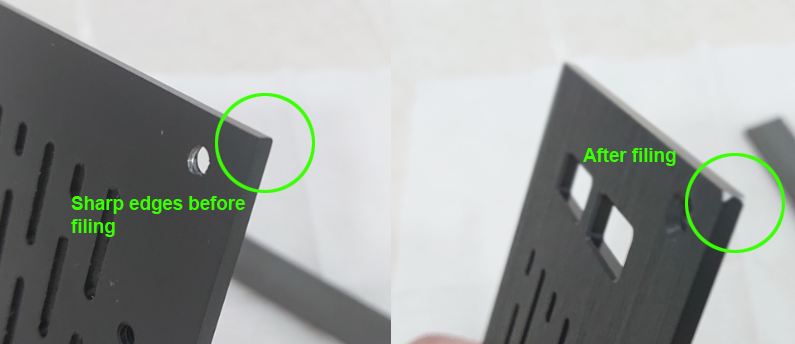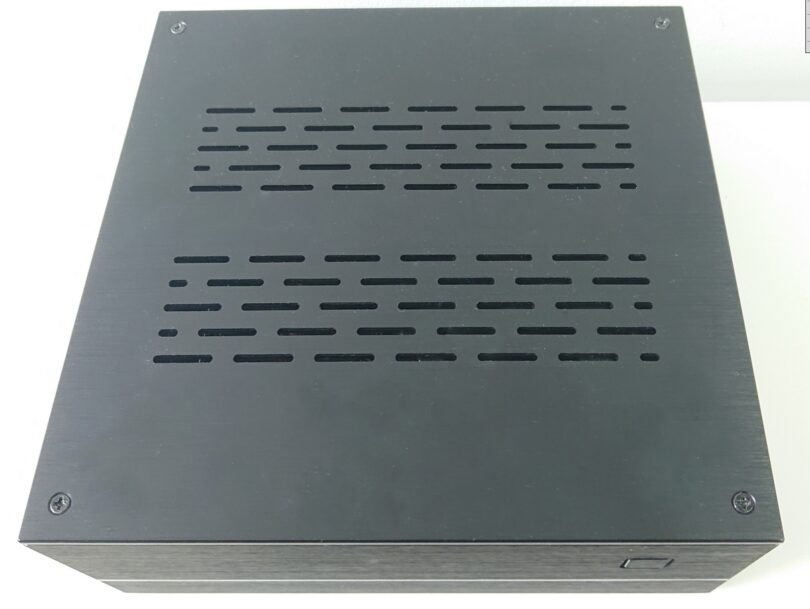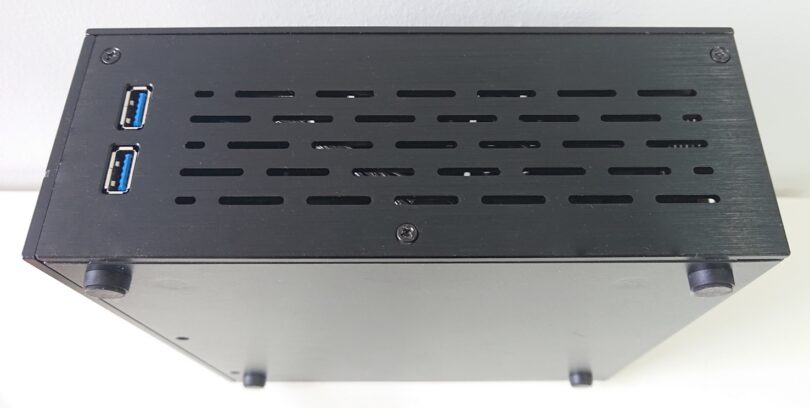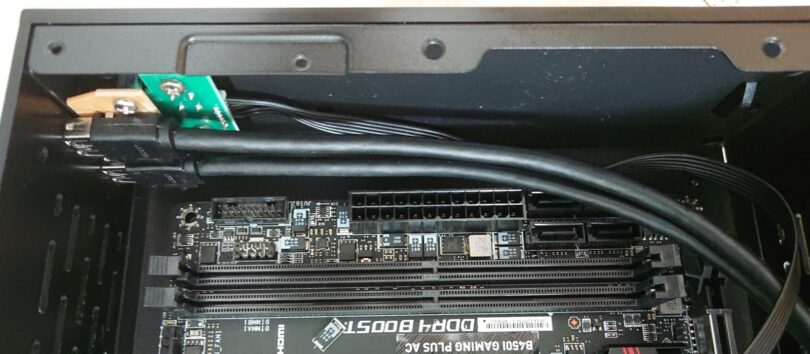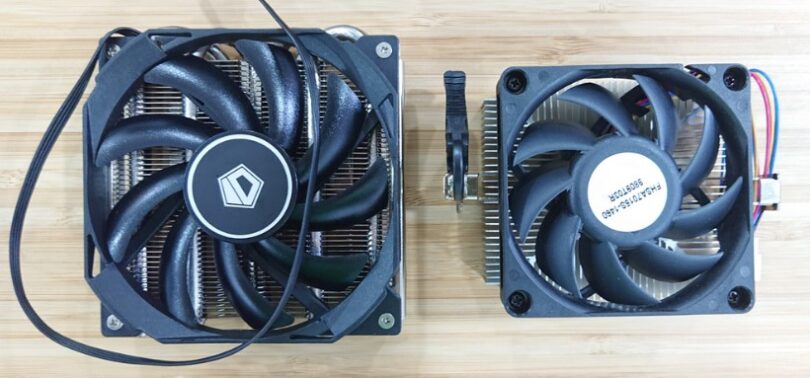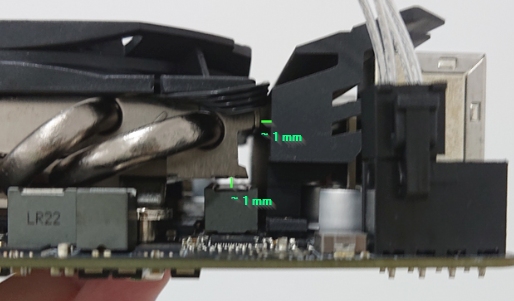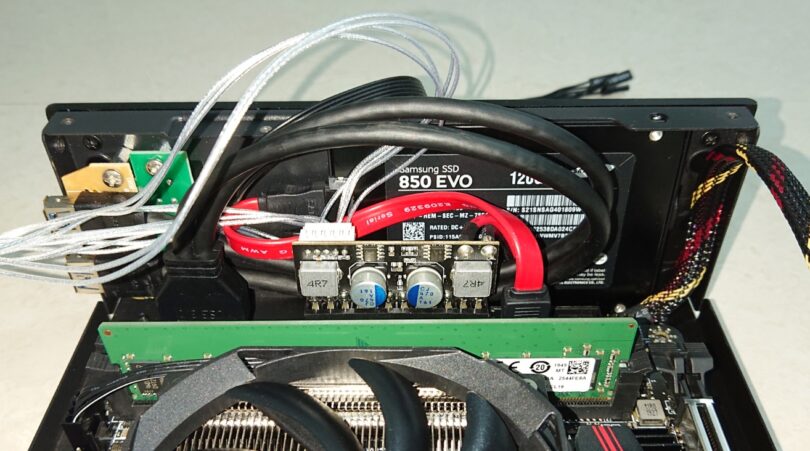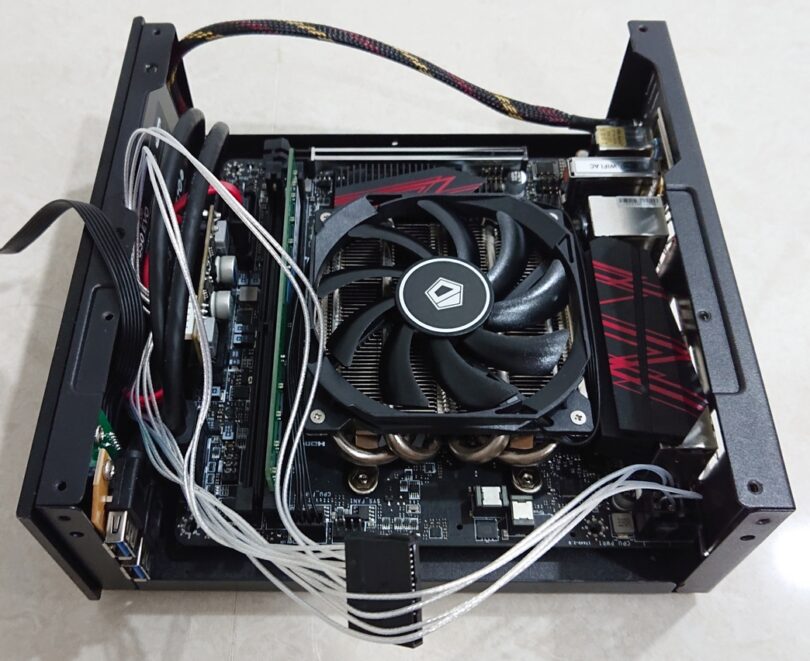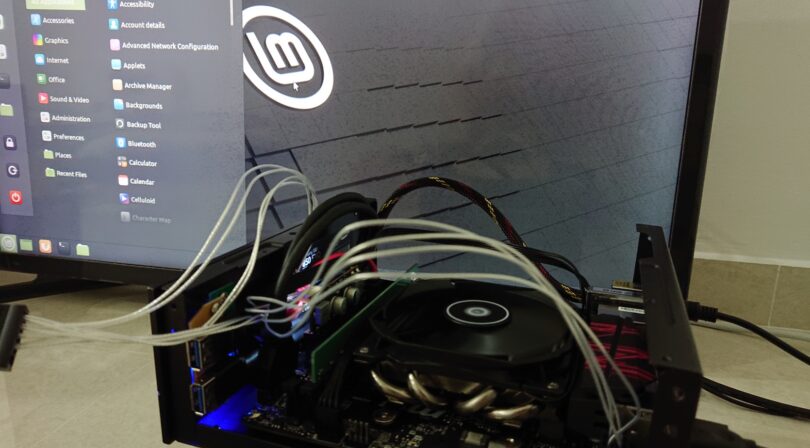Review provided by forum moderator ignsvn with editing performed by John Morrison. Want to contribute a review or editorial? Private message John (confusis) on the forum!
Many forum members know that I’m never a big fan of external AC-DC brick. I see them as something that adds more wire on my already cluttered, fully-wired PC setup, regardless whether you put the brick on top of the desk, or on the floor.
However, recently I have found a need to to build a low power, APU-only HTPC for family entertainment purposes. Think of watching online TV channels, Youtube, play light games, as well as doing office works.
The unit will be placed in the living room, which means it’ll be in the vicinity of my children. And children means property damage, scratches, and so on. Nope, there’s no way I’m going to use my spare MI-6 for the build. I need to use another case. A sacrificial lamb that doesn’t cost a bomb, but still fits my needs.
The Case
So here’s our new challenger, the Goodisory A01. I didn’t manage to take unboxing pictures, but the case comes in a basic cardboard box with some screws. Nothing fancy.
Basic specs:
- Dimension: 200 mm x 200 mm x 75 mm (3L), case only. With the rubber feet it becomes 200 mm x 200 mm x 83 mm (3.3L).
- CPU Heatsink clearance: around 55mm maximum, without drive bracket fitted. Note that this means the fan will be against the panel, possibly causing airflow or noise problems.
- Case fans: not officially supported, but you can zip-tie a thin fan on the drive bracket.
- Power supply: not included. Supports DC-ATX direct plug + external AC-DC unit
The front panel here. Notice the flat power switch, and two tiny dots below. Those are power and storage drive activity LEDs. On the side are 2 USB 3.0 ports. The top, left and right panels are attached using the countersunk screws and can be removed to make component installation easier.
The case is your typical frame-and-panels metal box. The frame is made of SECC steel, and the panels are made of aluminum (at least that’s what’s written on the website). An all-aluminum case should be lighter.
One flaw I straight away noticed was the sharp corners of the aluminum panels. These can easily scratch you (or your furniture, for example) if not handled carefully. As such, I decided to file the corners.
Why Goodisory A1? Well, from my point of view, the unique selling point of this case is the SATA drive configurations:
- 2 x 2.5”
- 1 x 2.5” + 1 x 3.5”
With some mods, I believe you’d be able to put 2 x 2.5” + 1 x 3.5” together.
The top panel. Do note that there are metal and glass options. I chose the metal one for safety and temperature reasons. The glass top panel doesn’t have ventilation holes.
The rubber feet at the bottom. Note that there’s no ventilation holes at the bottom. Your bottom M.2 drive may get a little toasty.
The layout inside, and the drives bracket attached on top.
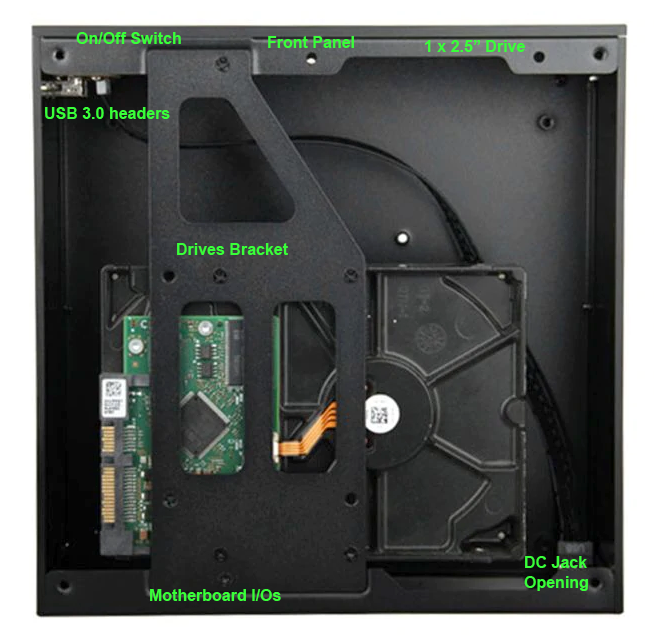
(Note: the picture above is taken from the internet. Overlay text added by me)
I didn’t manage to measure this properly, but if you don’t need to use the 3.5” drive, I believe you can use CPU cooler up to 55mm tall.
Note that, the case may have different names in different marketplaces, such as “B01 ITX Case” or “XQBOX A01”.
Parts & Components
Here is the hardware used in this build. Nothing fancy.
| Case | A01 / B01 ITX / XQBOX A01 |
| Motherboard | MSI B450i Gaming AC |
| CPU | AMD Athlon 3000G |
| CPU Cooler | ID-Cooling IS30 |
| Memory | Crucial 8Gb 2666 Mhz |
| Storage | Samsung Evo 850, 128 Gb |
| Power Supply | Metalfish PSU kit consisting of 150w AC-DC brick and 160w DC-ATX direct plug unit |
The Build Experience
As common with many SFF builds, I started with measuring the component dimensions, trying to test fit some components into the case, and so on – so that I can devise an installation sequence and strategy.
After trying to put the motherboard into the case, I straight away knew that the front part where the DC-ATX direct plug unit is installed, and one of the 2.5” drive locations, are a tight fit and will be problematic.
I proceeded anyway with installing the CPU & CPU cooler onto the motherboard. Before that, in the below picture is a comparison between the ID Cooling IS30 (left), and box cooler of the Athlon 3000G (right). The box cooler is all aluminum. Both CPU cooler fit, it’s just that I prefer to have something more capable and silent.
There’s about 1 or 1.5 mm gap between the ID Cooling IS30 to nearest MOSFET & MOSFET heatsinks.
In my battle plan, the next step would be to install the DC-ATX direct plug unit. And then the memory, into the memory socket further away from the CPU. Then, put the 2.5” drive on the provided bracket on top. It would block part of the vent holes, but it would be OK because I’m just using a low power CPU anyway.
In practice however, I decided to put the 2.5” drive in front of the case. Unfortunately, at this point I already installed the DC-ATX direct plug unit into the motherboard. Big mistake, because it’s very hard to arrange the 2.5” drive SATA cables with the DC-ATX direct plug unit attached.
In an attempt to remove it, I accidentally bent the DC-ATX direct plug unit slightly, on the tiny metal connectors that came out from the PCB to the 24 pin plug. Quite a horror experience, if you ask me. Upon a visual inspection, I did not see any solder cracks, so I decided to slowly bend it back.
Finally, I managed to install them properly, and below pictures will show you the beautiful mess.
Front section.
And overall..
Next, I prayed hard, and, eureka!
Performance
I did not do any benchmarking because my hardware setup is too modest to justify it. However, there are some reviews by others who have built using this case:
- https://www.youtube.com/watch?v=cZFpjWcSpoQ
- https://www.reddit.com/r/sffpc/comments/cfbqi5/ryzen_3400g_build_xpbox_goodisory_a01
- https://www.reddit.com/r/sffpc/comments/cvxnvy/just_waiting_on_the_psu_now/
Based on those reviews, the general opinion is that, the temperature in this case is so-so. This is understandable, because the ventilation holes on the metal panel are limited in both size and quantity. However, light office work and light gaming on a Ryzen APU seem to be OK.
As mentioned earlier, the glass top panel version doesn’t have any ventilation holes. It is highly advised to use spacers to create a gap between the glass and the main body.
Closing Thoughts
After using it for a while, I’ll list down the pros and cons below. Please note that they are specific to my use case and experience, and as such, may not applicable to you.
Pros:
- Reasonably cheap.
- 2.5” and 3.5” drives configurations.
- Ample room for CPU cooler if you don’t install any drive on the top bracket.
- Top and side panels can be removed for ease of installation.
Cons:
- SECC steel frame. Aluminum would be lighter.
- Sharp edges on the panels.
- Drives location could be better.
- Lack of ventilation holes.
All in all, Goodisory A01 ITX is an interesting contender in the SFF arena. It may not be the best out there in terms of temperature, but it’s surely usable for HTPC builds, especially if you need to use your existing 3.5” storage drive. Hardware installation is not exactly straightforward, but if you have worked with low quality, small SFF cases (like 7 liter and below), you should be more or less familiar with the experience.

